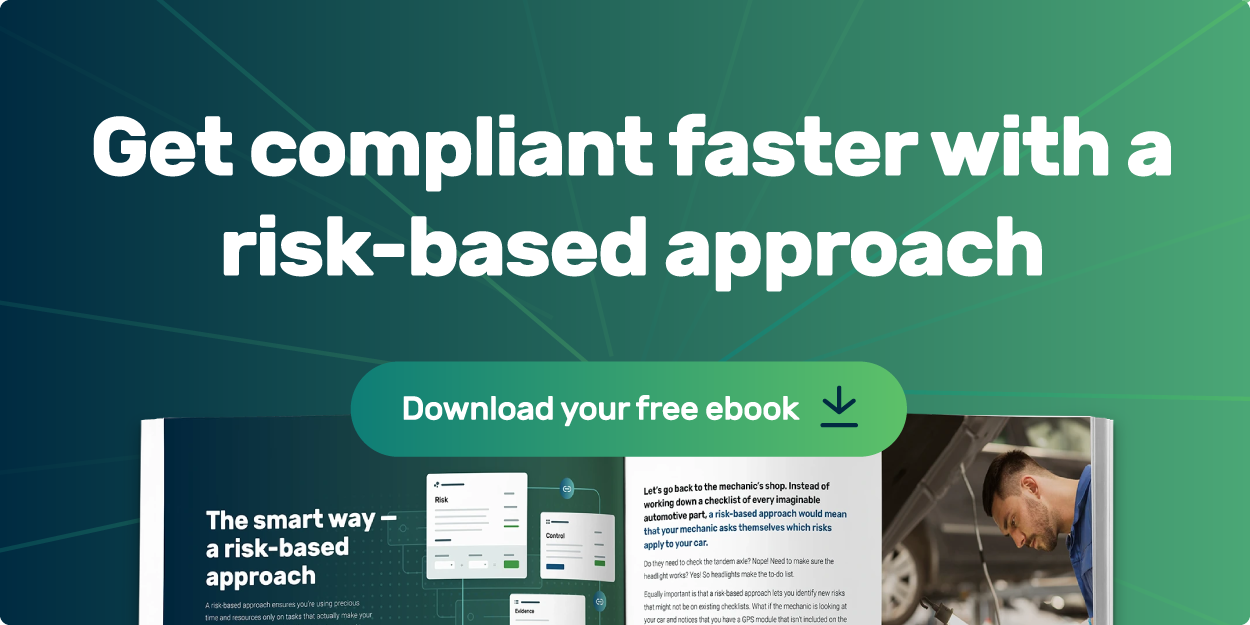Risk management is the identification, assessment, prioritization, and control of an organization’s risk. These risks can be strategic, legal, security, economic, or financial in nature and can stem from myriad sources, including management errors, liabilities, accidents, and more.
Once risks are identified, efforts should be made to monitor, minimize, and control the risks so that the probability of them occurring is significantly reduced — as are their impacts.
By ensuring your organization understands the purpose and sequence of the stages of risk management, the process itself will be less overwhelming and more efficient.
Without further ado, let’s jump into the six stages of risk management and how you can apply them to your own business.
1. Identify
Any risk management process starts with identifying risk. In order to do so, it’s important to conduct a risk assessment, during which you’ll look at all of your operations, assets, workforce, and IT to understand weaknesses and identify threats.
You’ll want to look at anything that could potentially disrupt business operations — from a security breach via ransomware to a natural disaster that takes out hardware — in order to properly identify where weaknesses are exposed and how you can reduce the possibility of those vulnerabilities being exploited.
It’s at this stage that an information security policy can be super helpful. This will allow you to create a set of rules, policies, and procedures to keep your organization’s data secure and ensure that all end users and networks comply with the minimum data protection security and IT security requirements. Just make sure your policy is tailored to reflect the unique security frameworks related to your region, industry, and organizational model.
2. Analyze
Next up is risk analysis. During this stage, you’ll want to establish the probability of each risk event actually occurring. Once you’ve established probability, you’ll next assign the potential outcomes of each event taking place. This will take us to stage number three.
3. Prioritize
Once you’ve analyzed your company’s risk, it’s time to evaluate that risk by comparing the magnitude of each risk event and ranking them according to both probability and consequence.
Bucket your events by low-, medium-, and high-risk — a risk matrix can be helpful here. This prioritization process will help you determine which risks should receive more of your time, effort, and resources, and which can be paid less attention.

4. Own
Next, it’s time to determine who owns what risk. For example, if your CIO, CISO, CTO, Head of Engineering, or other IT lead is overburdened with lots of business-critical tasks, maybe they only own the high-risk items, while medium- and low-risk items are owned by members of an IT compliance team, or sales and engineering.
Not only will assigning ownership allow team members to be clear regarding who is in charge of what, it will foster a culture of responsibility, empowerment, collaboration, and support.
5. Respond
Now that you’ve identified risks, analyzed the probability they’ll occur and their potential impacts, prioritized them, and determined who will own what risk, now it’s time to formulate a response plan for each.
Your response plan should entail how to mitigate additional risk should an event occur. Start by focusing on the high-risk items, then work your way through the medium- and low-risk events. Ensure each plan is clear and easy-to-follow, including each detailed step of the response process and how fast each step needs to be completed.
6. Monitor
Never forget that risk management isn’t a one-off task to be completed, it’s an ongoing process that needs to adapt and evolve over time. Not only should you continue to repeat the above five steps, you’ll also need to make sure new risk threats are identified as new hardware is incorporated and new software is installed into your systems and networks.
By staying on top of your risk management monitoring, you’ll be able to ensure that you have maximum coverage and that your organization is fully protected.
Let Strike Graph do the heavy lifting
Strike Graph’s all-in-one compliance platform lets you streamline the risk management process. Easily identify, analyze, prioritize, own/delegate, respond to, and monitor risk on an ongoing basis to ensure you meet all of your legal, internal, contractual, and regulatory goals and requirements. By doing so, you’ll also be able to better protect your organization from threats and uncertainty, all while reducing costs and increasing business integrity, adaptability, continuity, and success.
.jpg?width=1448&height=726&name=Screen%20Shot%202023-02-09%20at%202.57.5-min%20(1).jpg)

.jpg)








